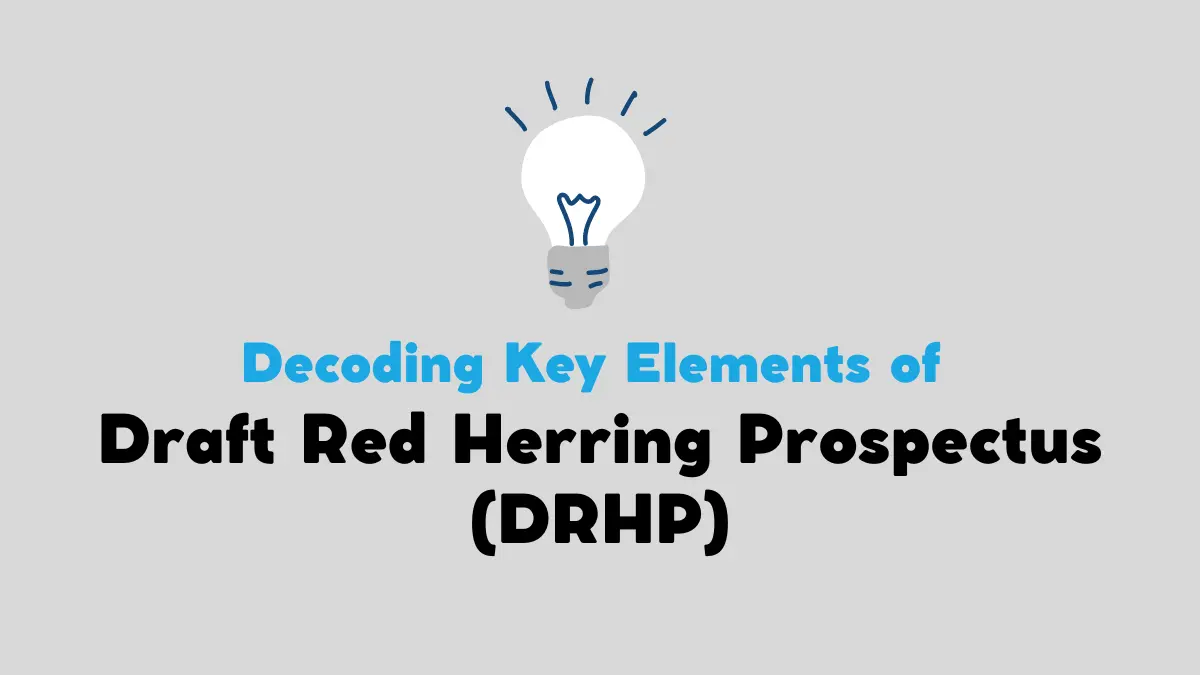The Draft Red Herring Prospectus (DRHP) is a preliminary registration document prepared by merchant bankers on behalf of a company planning to raise capital through an initial public offering (IPO). It is also known as the offer document. The DRHP provides potential investors with key information about the company, including its business model, financial performance, risk factors, and proposed use of funds.
ALSO READ : What’s the Difference Between RHP and DRHP?
In this guide, we will explore the 9 key factors to consider while evaluating an IPO through the DRHP, ensuring a detailed analysis of the company’s prospects.
Company Overview
The DRHP should provide a comprehensive overview of the company, including its history, business model, products or services, market presence, and competitive advantage. Understanding the company’s background and its unique selling points is crucial for assessing its potential.
Evaluating Financial Information
The DRHP presents detailed financial statements, allowing investors to assess the company’s financial health, profitability, growth rate, and stability. By analyzing these figures, investors can make informed decisions regarding the company’s financial potential.
Valuation
Analyse the company’s valuation in relation to its financial performance, industry peers, and market conditions. Compare key valuation metrics such as price-to-earnings ratio (P/E), price-to-sales ratio (P/S), and enterprise value-to-EBITDA (EV/EBITDA) with industry averages and similar companies in the market
Analysing Industry Dynamics
The DRHP includes an analysis of the industry in which the company operates. This analysis covers aspects such as market size, growth potential, trends, and the competitive landscape. Understanding the industry dynamics and the company’s position within it helps investors evaluate future prospects and potential risks.
Risk Factors
The DRHP should disclose all potential risks and uncertainties associated with the company’s business, operations, and industry. These may include regulatory risks, market risks, competition, technological changes, and any other factors that may impact the company’s future prospects.
Management Team Competence
The DRHP provides information about the company’s management team, their qualifications, experience, and past achievements. Assessing the capabilities of the management team is crucial for evaluating the company’s potential for success. Investors can use this information to gauge the team’s ability to execute business strategies effectively.
Use of Proceeds
It is important to understand how the company plans to utilize the funds raised through the public offering. The DRHP should provide a clear breakdown of how the funds will be allocated, such as for expansion, research and development, debt repayment, or working capital.
Legal and Regulatory Compliance
Investors must review the DRHP for any legal or regulatory issues the company or its promoters have encountered or are currently facing. This section also highlights pending litigations, disputes, or regulatory changes that may impact the company’s operations or financial performance. Ensuring compliance and identifying potential legal risks is essential for making informed investment decisions.
Offer Structure and Pricing
The DRHP outlines the structure of the public offering, including the number of shares being offered, the price range, and any lock-up periods or restrictions on selling shares after the IPO. Understanding the offer structure helps investors assess potential dilution and evaluate the pricing attractiveness of the IPO.
Remember
The DRHP is a critical document that provides essential information for potential investors. It is important to thoroughly review and analyse all aspects of the DRHP, seek professional advice if needed, and make an informed investment decision.

